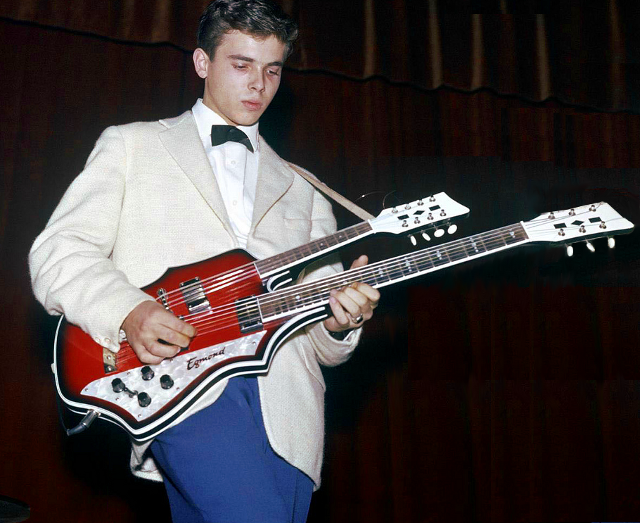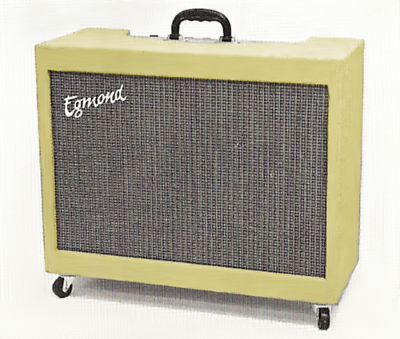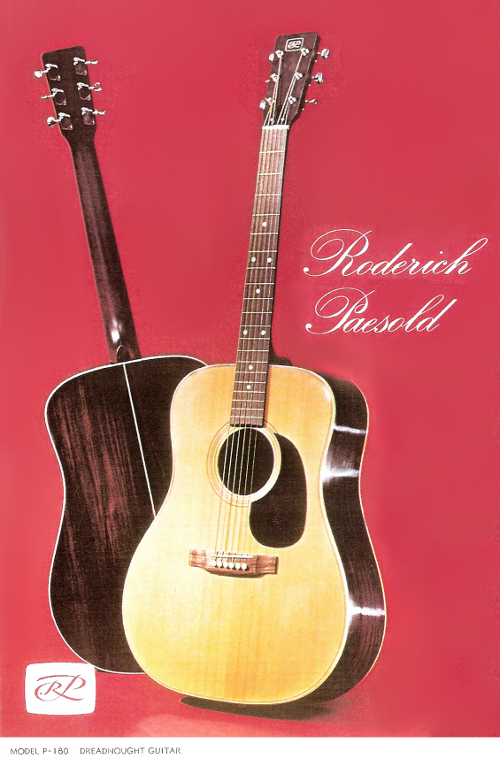
 |
www.Egmond.se |
| Start | About me | The Egmond story | My Egmonds | Egmond links | Other links |
|
The Egmond
story, in short.
To get the complete Egmond story, I recommend the books about Egmond, written by Wim Markenhof and Cees Bakker.  As a retired station-master, in 1932 Uilke Egmond (1878-1959) founded a music school and a music shop in Valkenswaard, that was named Musica. In the music school he gave violin lessons and in the shop he sold instruments that was, mainly, imported from the Eastern Europe. In 1935 the business moved to Eindhoven. Uilke's sons, Gerard (1904-1974), Dick (1920-1992) and Jaap (1921-1993) joined the company during WWII. The import of instruments ended and they decided to make the instruments on their own. In the early 50's there were 20 employees and 50 guitars a week, was made. Production of Banjos and Mandolins was added. In the early 60's there were 80 employees and 2000 guitars a week, was made. And the business moved to Best, a northern suburb of Eindhoven.  Musica
in Eindhoven.
 The new factory in Best, 1961.
In the 60's the Egmond was the largest luthier in Europe and they were more known for quantity than quality. Cheap instruments was made in large numbers and, practically, everyone could afford to buy a guitar. The cheapest models had a price tag that was only 10% of the cost for a comparable model of a Gibson or a Fender.  A movie clip from the Egmond factory in 1966.  John
Lamers is playing on an Egmond double
neck, in the early 60's.
 Egmond
also made accordions, like this, that belongs to
Jozef in Diessen.
 Paul
Cooijmans is playing on his Egmond Telstar,
from 1968.
The Egmond guitars had insipid model designations with letters and numbers in a strange combination. To popularize the guitars, they came up with the 7-series. It was the Lucky 7, the Solid 7 and the Bass 7. The Lucky 7 was actually a JG113/5CA. More about the Lucky 7 and Solid 7 in the My Egmonds tab.  The Solid 7 with 2
pickups.
The Solid 7 with 3 pickups and tremolo.
The Bass
7.
 On the British market, The Egmond 105/0 was
named Rosetti 276.
Several guitarists and bass players has started their careers with an Egmond. In 1956 George Harrison begun playing on an acoustic guitar. It was an Egmond 105/0, that also was called Egmond Toledo. In the UK the Egmond guitars were marketed as Rosetti guitars, so the guitar that George Harrison had, was a Rosetti 276. More about the Toledo in the My Egmonds tab.  George Harrison in 1956, playing his Rosetti 276 (Egmond 105/G). Also Brian May started with an Egmond Toledo. During 2003 Andrew Guyton restored Brian May's guitar to better than new. Paul McCartney used a Rosetti Solid 7, that he re-stringed with four piano-strings, to make it a bass. It didn't work that well but maybe he was not aware that Egmond (Rosetti) had the Bass 7.  Paul McCartney and his bass converted Solid 7.  Examples
from the 1965 catalog.
But Egmond also made high quality instruments. To only mention a few, there was the Egmond 2 and 3, furthermore there was the Egmond 2V and 3V. They had 2 or 3 pickups, as the number states. 2V and 3V (V=vinyl covered body) had the body shape of a Fender Jaguar or Fender Jazzmaster. Later the Egmond 2 and 3 got the name Egmond Thunder, and the Egmond 2V and 3V got the name Egmond Typhoon. A more advanced and luxury guitar, with the same body shape as the 2V and 3V, was the Egmond Tempest.  Egmond made basses in the same model series.   Egmond
Scout.
Egmond Scout had a simple solid un-chamfered body, equipped with externally attached combined pickguard and pickup (same as Solid 7). In total, there was a jungle of model designations and names. Hundreds of versions and variants was made during the years. Also a range of guitar amplifiers was made by Egmond. They were designed in collaboration with Philips and used speakers and components from Philips.  The
V 820 from
the 1961 catalog. 10W tube amplifier and was the
successor of the V
630 from the mid 50's.
 The
V 1821
from the 1961 catalog. 30W tube amplifier.
 Amplifiers from the 1968 catalog (made by Davoli).  Amplifiers
from the 1970 catalog (corresponds to Steelphon
Tiger and Steelphon
Conductor).
Accompany to the book about Egmond, written by Wim Markenhof, is some Egmond catalogs that gives you a hint of the comprehensive product range of Egmond. Egmond branded their instruments different at other markets in other countries. It was Alberti, Alex, Alfesta, Alpha, Caledonie, Combo, Dixieland, Frima, Goldene Harfe, Hi-Spot, Jester, Lido, Lion, Manhattan, Marizza, Miller, Orpheum, Roderich Paesold, Rosetti, Royal, Royalist, Stadium, Strad-O-Lin, Tonemaster, Vander, Vega and Wilson. During most of the 60's, the American market was tremendous for the Egmond company, shipping one container of guitars every week, to New York. The competition from cheap Korean instruments, made the American Egmond importer to shift from buying guitars from the Egmond company to buy from a Korean manufacturer instead. All the sales to America ended and the Egmond company found themselves in a tricky situation. In 1972, the C.F. Martin & Co made a cooperation agreement with Egmond, to make guitars with the Vega brand, by the drawings from C.F. Martin.  In 1979,
the C.F. Martin & Co broke the cooperation
agreement with Egmond. Then Egmond begun
making the guitars, under the ownership of Tolchin
Instruments, with the brand name Alpha.
 Roderich Paesold is a violin manufacturer in Germany, that started with manufacturing of violin bows and strings in 1919. In 1968 the company was sold to the clarinet manufacturer Wenzel Schreiber & Söhne, in Nauheim. The companies were acquired in 1981, by the British horn instruments manufacturer Boosey & Hawkes. In the 70's and the 80's there were a great demand for guitars, but Boosey & Hawkes had no guitar manufacturers within the enterprise, and the only luthier in the corporation was Roderich Paesold. So, this name was used for a series of guitars, that were made by Egmond in Boxtel, just north of Best. Get some more details, when you read about my Roderich Paesold P100.  In 1983 the Egmond company went bankrupt. The activity, that used to be so comprehensive, was to an end. AudioOne in Canada is the owner of the Egmond brand. They had plans to re-launch a series of Egmond guitars. They were refreshed versions of the most popular Egmond guitars, slightly different in appearance and made of modern materials and parts. During 2011 the designer passed away and the whole project halted.  |